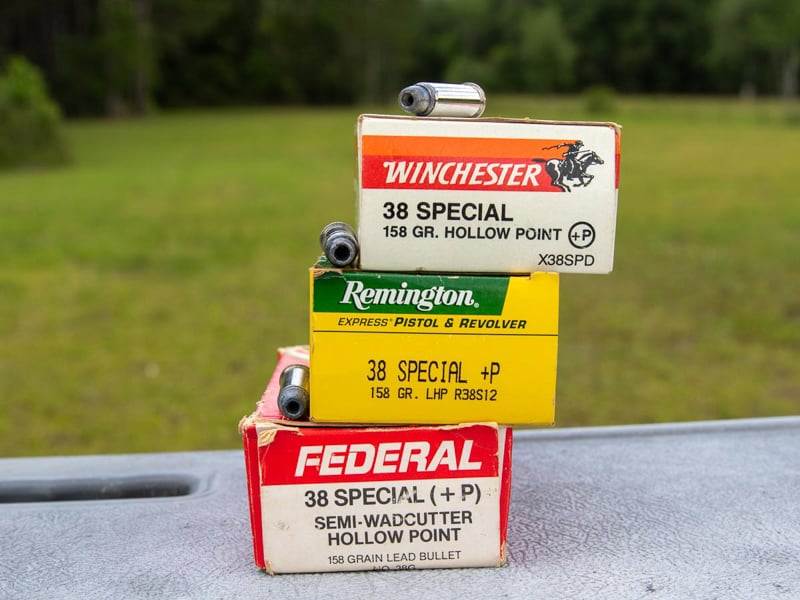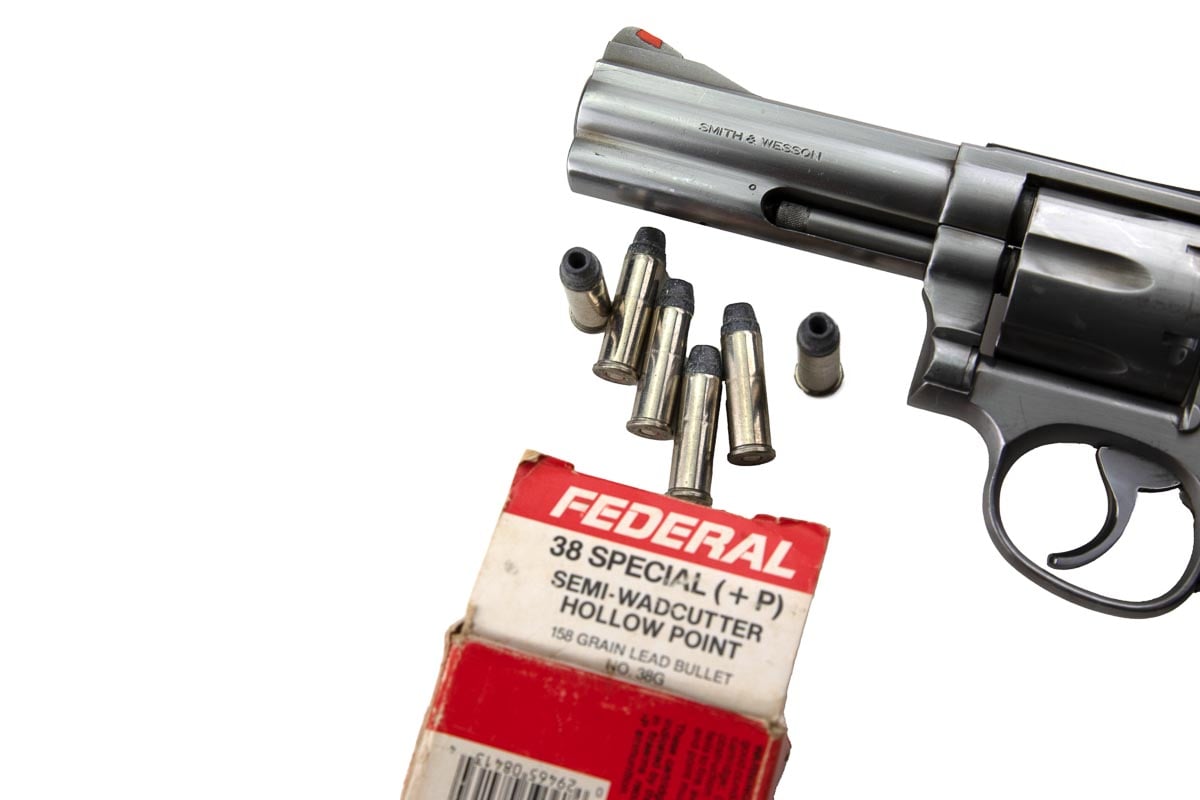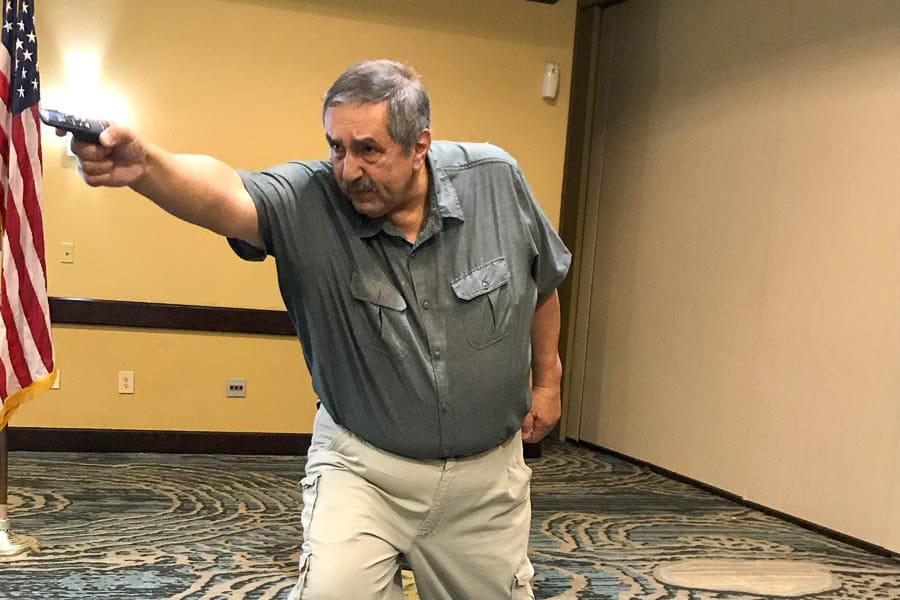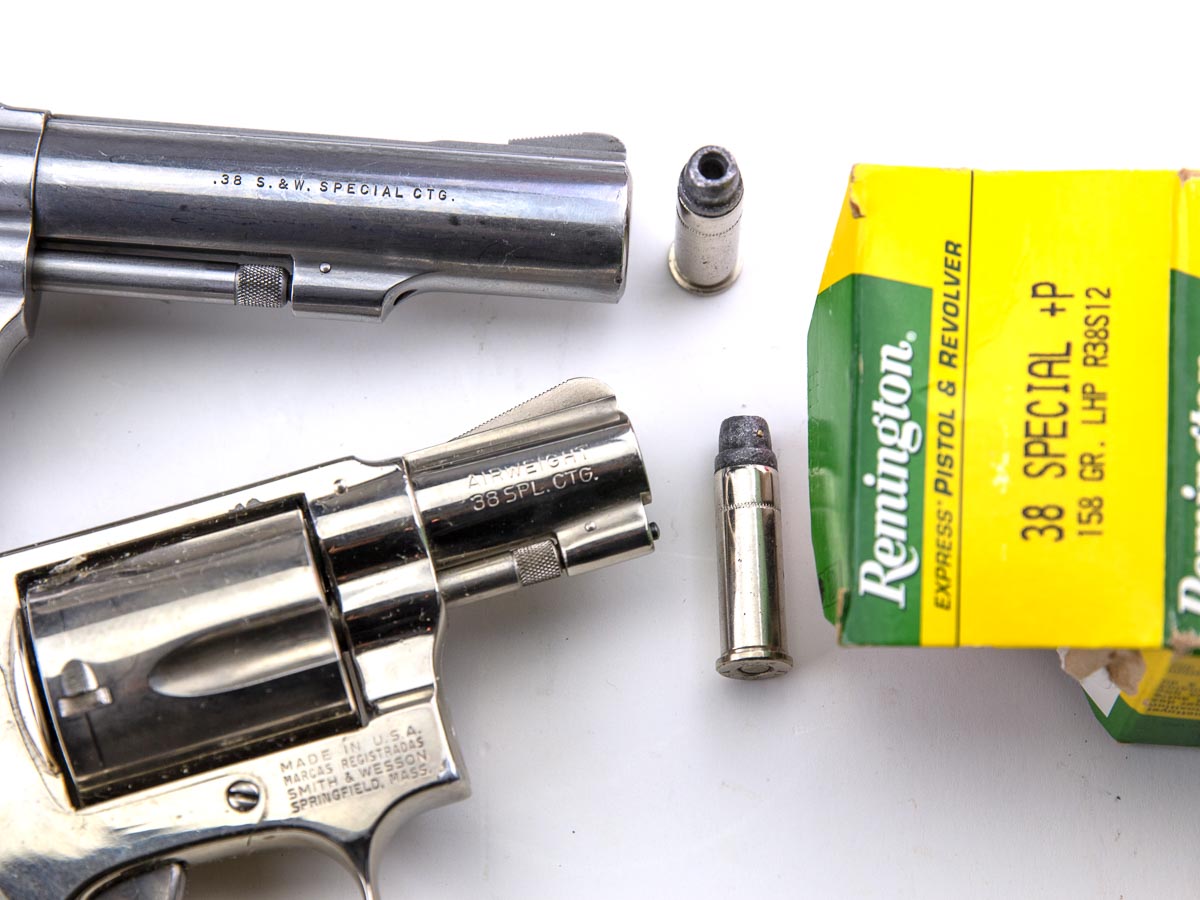The cartridge that brought the .38 Special “up off its knees.”
Let’s go back in time to late third-quarter 20th Century America. The .38 Special is still the most common police service handgun cartridge in America, and probably the most popular for armed citizens as well. Its standard loading is a 158-grain lead round-nose bullet which tends to slip through flesh, creating narrow, puckered ice-pick-like wounds that often go all the way through to endanger unseen bystanders behind the perpetrator. Cops come to call it “the widow-maker” because you can pump six of them into the attacker and he’ll still make your wife a widow before he dies, and in New York, a police sergeant dies exactly that way. Police unions from NYPD to LAPD demand better ammo. Their demands go largely unheard.
A very few agencies issue the 200-grain blunt-nosed “Super Police” load, but it’s even slower and develops a reputation for bouncing off car windshields. Lee Jurras debuts light, fast semi-jacketed hollow point .38 Special loads that do indeed expand, but don’t always penetrate deeply enough, though they’re a definite improvement. Some departments go with “the Keith bullet,” a sharp-shouldered but non-expanding semi-wadcutter. Tests indicate it will work better. NYPD tries it, but their lead firearms instructor will tell me in the late 1970s that it didn’t work a bit better in the field than the round-nose lead.
And then…in the early 1970s, Winchester introduces an all-lead semi-wadcutter hollow point bullet, at a stated +P velocity of close to 900 feet per second. Shooters simply call it “158-grain LSWCHP +P”: 158 grains of lead, semi-wadcutter shape, with hollow point and added power/added powder.
And things change.
“Success Has Many Fathers”
It may have been George Washington who first said that success has many fathers, but failure is an orphan. The new .38 Special round was indeed a success, and it had many with a legitimate claim to its parentage.
The product code for the new Winchester round included the letters SPD, which we are told stood for “St. Louis Police Department.” Allen Jones at the Dallas PD ballistics lab tested this round, found it good, and gave his input to Winchester. When DPD adopted it, complaints about “.38 Special stopping power” tapered off. Curiously, though, only the locals there called it the “St. Louis Load.” The then-Metro-Dade (now Miami-Dade) county police adopted it, as did the City of Miami Police, and in the Southeast, it became known as the “Metro Load.”
Chicago was then the second largest city in the nation, hence its “Second City” nickname, and its police department adopted the round. It became known throughout the Midwest as “the Chicago Load.”
Canada’s national police force, the Royal Canadian Mounted Police, adopted it, most if not all of the time specifying that it be loaded even hotter, to a thousand feet per second. There, of course, it became known as “the RCMP Load.”
But, early on, the USA’s most prestigious law enforcement agency adopted it too, and that gave it the most common nickname we heard then and now: “the FBI Load.”

Feedback From the Field
How well did the FBI load work in the field? I had just started out as a police firearms instructor and a gun writer when, circa 1972, I got to sit down with a Winchester rep who gave me some of the ammo and told me who to talk to in the agencies which were using it. The result was one of my first articles in a gun magazine.
Until then, I had been loading my own .38 Specials with either hot handloads, Norma 100-grain hollow points, or the hard-to-find Super Vel…but after talking with the police instructors who monitored shootings on departments that had a lot of them, I switched to 158-grain LSWCHP +P and stayed with it for a very long time.

FBI: Complaints about stopping power from the field pretty much disappeared. The duty guns included some 4” revolvers; the 3” barrel ones the Bureau started issuing around then; and 2” barrels then authorized for off-duty and backup, and sometimes carried “on the job” by Special Agents. In April of 1986, a horrendous shootout occurred in Miami that left two agents dead, three crippled for life, and a couple more wounded but recovering. A big deal was made about a 115-grain Winchester Silvertip 9mm round fired by a member of the local FBI SWAT team mortally wounding the primary cop-killer but not penetrating deep enough to put him down in time…but the killer and his partner were slain by FBI Agent Ed Mireles with 158 grain .38 Special FBI loads from his privately-owned, Bureau-approved 4” S&W 686 revolver.

Chicago: No complaints with good hits. St. Louis: the same. Dade County and Miami PD: same. Dallas: same. RCMP: whether the issue S&W Model 10 was the 5” barrel version issued to uniformed personnel or the 2” issued to plainclothes investigators: no complaints.
Ohio: the late Bill Groce was head of firearms training then at OPOTA, the Ohio Peace Officer Training Academy. He researched the FBI load and recommended it to all departments using .38 Special in the state. Bill was a Jeff Cooper graduate and a big fan of the 1911 .45 auto for police work, but he told me that the .38 Special FBI load was putting bad guys down just as fast as .45 hardball, which he hadn’t found to be the case with earlier .38 Special ammunition. That comparison was a refrain I heard again and again.
NYPD: This was the last of the giant departments to go hollow point, in 1999. NYPD had 9mms by then but still lots of .38s among their 30,000-plus sworn officers. They started by issuing the soft lead 158-grain nylon-jacketed Nyclad hollow points and were pleased with their performance. Those were only replaced by the “NYPD Load” .38 Special, the 135 grain Speer Gold Dot designed expressly to expand out of 2” barrels, and which worked remarkably well out of the few 4” service revolvers that were still on the street before the late “twenty-teens” when the department went 100% 9mm.
.38 Special — Brand Comparisons
Winchester had made its 158-grain all-lead hollow points relatively hard, perhaps to reduce leading in the barrel. Over the years it became apparent to me that when an FBI load failed to expand in flesh, it was usually one of that brand. Remington made their 158-grain LSWCHP+P bullet softer, and it expanded the most. In the early 1990s when I taught a class at the DEA Academy at Quantico, I was told their testing had convinced them to specifically order the Remington rounds for the many drug enforcement agents carrying snub .38s for duty, backup, or undercover at the time due to its distinctly better expansion. The Federal, as used by Mireles in Miami on that terrible day, was in between. Speer produced some 158-grain LSWCHP +P, but it was not widely distributed and I never did find any shootings with it.
Fast forward to 2023. Winchester still lists the 158-grain LSWCHP +P .38 Special on their website. I can’t find it on the Federal website at this writing, but Remington has it in their High Terminal Performance (HTP) line. There are certainly other good .38 Special loads today — I’m partial to the street-proven Speer Gold Dot 135 grain +P — and an increasing number of experts are comfortable with the mild 148-grain Mid-Range wadcutter target load for personal defense, especially in lightweight “snubbies.” That said, I keep a four-figure round count of Remington FBI loads on hand, simply because more than half a century in the field shows it worked well for its intended purpose…a success which, indeed, had many fathers.



